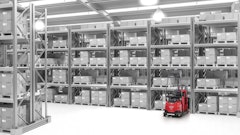
This content is sponsored by DecisionPoint and brought to you in partnership with Honeywell.
In a day and age where supply chain visibility is paramount, it’s easy to get lost in the shuffle of what’s “nice to have” vs. what’s “necessary to have.”
From voice picking and advanced software solutions to machine learning and other forms of warehouse automation, it’s “all about giving the people doing the work the tools, technology and information they need to do their jobs faster, safer and more accurately and doing it in a way that makes sense,” says Samuel Gonzales, VP, Enterprise Architecture, DecisionPoint Technology.
Take Honeywell Voice for example, a voice-directed solution that enhances productivity and accuracy in warehouse and field operations. Honeywell Voice enables a hands-free, eyes-up approach that guides employees through voice-directed workflows, minimizing the number of steps required to complete tasks, which in turn, maximizes efficiency and productivity.
“This solution not only streamlines processes but also enhances safety and accuracy. With fewer distractions and more intuitive guidance, workers can perform tasks faster and with fewer errors. Ultimately, Honeywell Voice makes jobs easier by reducing cognitive load, improving ergonomics, and empowering workers to be more confident and effective in their roles,” says Glenn Hall, Senior Channel Business Manager, Honeywell.
Honeywell Voice and other wearable-type technologies are part of a bigger picture called end-user enablement, which equip employees with the skills, tools, and support needed to effectively do their job.
Here are 5 ways end-user enablement promotes modernization in the supply chain.
1. Faster onboarding.
Oftentimes, onboarding can be bogged down by manual processes. Paper training manuals and siloed functions can slow down a new employee’s ability to learn, absorb and retain information.
Using the right mix of technology can make training intuitive and drastically shorten the onboarding time.
Honeywell Voice, for instance, improves worker safety by up to 20%, and reduces training time up to 85%. Plus, it offers up to 40 different language options, so workers can speak in their native languages.
2. Increased productivity.
Good technology should know how to get out of the way, says Gonzales.
“The more time you spend interacting with the technology instead of doing your job, the bigger the hit to your productivity. We strive to enable users with technology that can be accessed without stopping what you are doing,” Gonzales adds.
Case in point: Equipping workers with the right equipment empowers a skilled, adaptable workforce.
3. Reduced errors.
Errors happen, especially when humans are involved. Maybe they’re distracted, maybe they aren’t feeling well or didn’t get enough sleep the night before their shift. Maybe they’re confused about the task at hand.
At the end of the day though, it should matter the reasoning behind the error; most errors can cost companies money, time and even their reputation to resolve.
But, incorporating technology into the human element, and those mistakes become almost non-existent.
End-user enablement provides workers with access to real-time data and insights, allowing them to make informed decisions that positively impact the supply chain, Hall says.
For instance, Honeywell Voice increases productivity by more than 30%; corrects up to 80% of picking errors; achieves 99.99% order accuracy rates; and lowers attrition rates by 30%.
“Workers no longer need to stop and check screens or paperwork—they receive real-time instructions through voice, allowing them to stay focused and move safely through their environment,” Hall says.
4. Greater collaboration.
The saying, “it takes a village,” doesn’t just apply to the neighborhood kids. For many of today’s supply chain companies, it’s about power in numbers; the more employees involved and working together, the greater the result.
Technology is no different.
Empowered employees can adapt quickly to changes and disruptions in the supply chain, ensuring a more agile and responsive operation.
“When workers have the right tools and knowledge, they can collaborate more effectively with their colleagues, leading to a more cohesive and efficient supply chain,” says Hall.
5. Enhanced flexibility and customer satisfaction.
Gone are the days of companies using the same system and piece of hardware for 10-plus years without undergoing any enhancements or tweaks. That’s because today’s ever-evolving supply chains require continuous innovation, faster implementation and wider scalability options.
The supply chain is always changing; software providers must invest in creating the technology solutions that can keep up with these ever-changing demands.
“Pressure to work quickly while being provided with old technology that does not mimic what they use in their daily lives,” Gonzales says, is the No. 1 challenge today’s supply chain organizations face.
Honeywell Voice provides advanced data collection, automated documentation and analytics capabilities that enable users to monitor real-time throughput targets and inventory levels; ensure continuous process improvements; and make better informed decisions to move the business forward and meet anticipated demands.
In addition, Honeywell Voice data is easily integrated into labor management systems (LMS) or off-the-shelf business information (BI) visualization tools.
“By enabling workers to perform their tasks more effectively, the overall quality and timeliness of products and services improve, resulting in higher customer satisfaction,” says Hall.
Visit DecisionPoint booth #915 at CSCMP’s Edge 2025 conference, Oct. 5-8, to see end-user enablement in action.








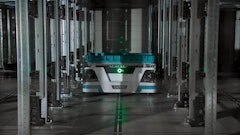
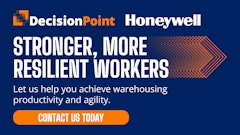



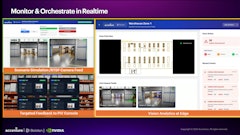

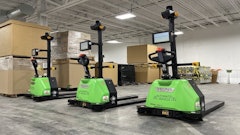

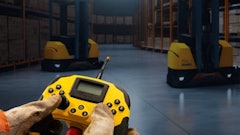
![Pros To Know 2026 [color]](https://img.sdcexec.com/mindful/acbm/workspaces/default/uploads/2025/08/prostoknow-2026-color.mduFvhpgMk.png?ar=16%3A9&auto=format%2Ccompress&bg=fff&fill-color=fff&fit=fill&h=135&q=70&w=240)

